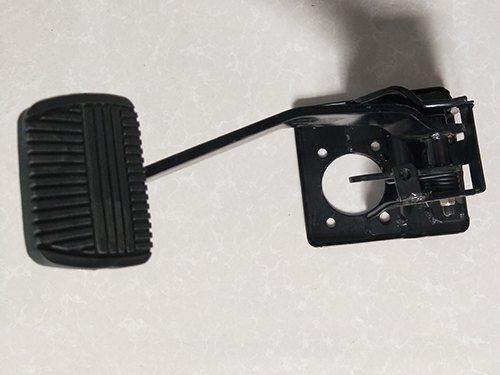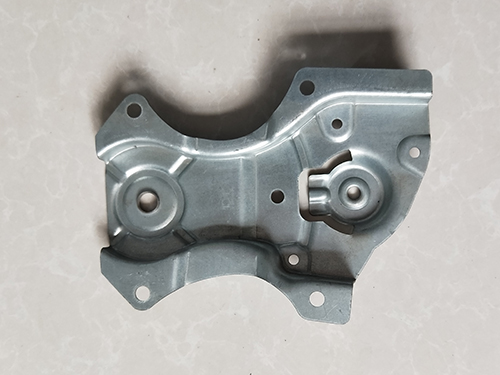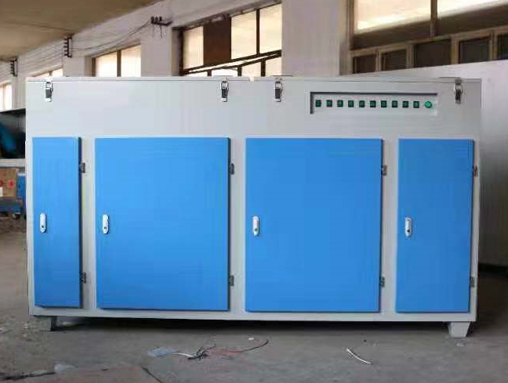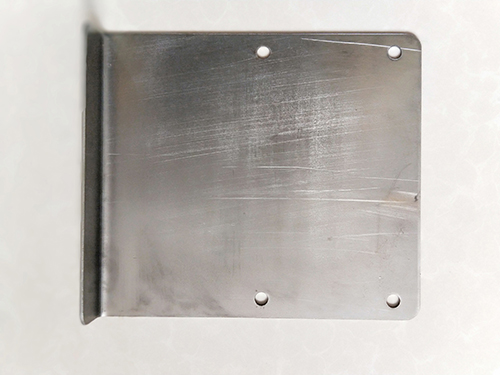Design and Industry Status of Product Structure for Automotive Stamping Parts
With the promotion of flexible automation production methods in automobile production and the strict requirements for various performance indicators, the commonly implemented just in time production plan today is based on stable and uniform sheet metal stamping, achieving defect free stamping processing, in order to meet the welding quality, body sealing, and coating process requirements of the entire vehicle. This technological trend is reflected in the inevitable requirement for stamping equipment to achieve six transformations, namely deepening, edge pressing, conveying, control and adjustment, mold processing, and inspection.
1、 The current situation of China's automotive stamping parts industry
With the development of the automotive industry, stamping processing, as one of the more basic, traditional, and important metal processing methods, will continue to develop in China's automotive industry in the next 10-20 years. In the composition of a car, the body, engine, and chassis are collectively referred to as the three major assemblies of the car. According to statistics, the body mass of buses, sedans, and most cars accounts for about 40% to 60% of the total cost of the vehicle. Sedan bodies are made up of about 400 stamped parts welded together. Currently, there are few large enterprises engaged in stamping parts in China, mainly small and medium-sized enterprises. Stamping parts are mainly made up of small and medium-sized stamping parts. The large stamping parts in the automotive industry are mainly deep drawn, and in China, this part of stamping parts is mainly concentrated in large factories such as automobile factories, tractor factories, and food machine manufacturers. Large stamping and deep drawing factories are not yet common. Stamping parts are an essential component of automobiles. According to data statistics, on average, each vehicle contains more than 1500 stamping parts, including not only large covering parts, but also doors, side panels, cover plates, chassis, floors, etc. The average price of stamping parts for the body of each vehicle is around 15000 yuan, and the average price of stamping parts for the chassis, engine, and other parts is around 10000 yuan. Currently, the utilization rate of stamping equipment in China is generally around 85%. The production capacity is as follows: general stamping 4-4.5 times/min, multi station press 11-15 times/min, and injection molding 20-25 times/min. Therefore, it can be seen that the development prospects of China's stamping parts industry are very optimistic
2、 Design of Product Structure for Automotive Stamping Parts
1. Product selection and control of incoming board materials
Those engaged in the stamping industry know that the material of the product and the material of the sheet metal have a significant impact on the consistency of stamping parts. During the stamping process, the rebound angle of the material is directly proportional to its yield point, and inversely proportional to its elastic modulus. Therefore, when designing stamped products, in order to ensure that the designed products meet the specified strength requirements, the material used to make stamped products must first be selected with a lower yield point. Only then can the produced products maintain a stable shape and size range after forming. In order to ensure the consistency of raw materials used for producing stamping products, it is necessary to strictly control the procurement channels and try to source from a single supplier as much as possible. For suppliers of materials, although there are frequent business dealings, regular inspections should still be conducted to ensure that they do not pass off inferior products as good.
2. Reasonable stamping process and mold structure
In order to achieve consistency in the forming of stamped parts, a reasonable stamping process is also necessary. A reasonable stamping process first requires a reasonable stamping process, followed by maintaining the direction of stamping, then grasping the pressure of stamping parts, and finally having a good process compensation. In order to weld the upper and lower shells of stamping products together well in subsequent engineering, there must be a very strict tolerance requirement for the height of the flange around the parts used for stamping products. The original stamping process used drop punching and edge punching, which has the advantage of greatly reducing the number of mold inputs and lowering the cost of the process; However, this process also has a major drawback, which is that the height deviation of the flange in the production of stamped products is large, resulting in very large gaps when welding the upper and lower shells of the stamped products. In order to solve this problem, improvements were made to the original process by changing the forming process to three processes: drawing, trimming, and flanging. This new technology can prevent distortion of stamped parts during production, while also strictly controlling the welding gap within 1mm. This new process solution can achieve consistent stamping of products. Another factor that has a significant impact on the consistency of stamping parts is the structure of the mold, which can be reflected in the rationality of forming positioning, the selection of appropriate stretching ribs and structures, etc.
Metal stamping parts; The service life of molds is related to many factors such as the structural design of stamping parts molds, the selection of stamping parts mold steel, heat treatment, surface treatment, mechanical processing and grinding, wire cutting technology, stamping equipment, stamping materials and processes, poor lubrication and maintenance level of stamping parts molds, etc.
Among the various factors that cause the failure of stamping dies, improper structure and material selection of stamping dies account for about 25%, improper heat treatment accounts for about 45%, and process problems account for about 10%; Equipment problems, lubrication problems, and other factors account for about 20%. Pay attention to maintenance after installation of gold stamping parts to prevent rusting and erosion When using it in daily life, it is important to close and open it gently to prevent damage caused by hard closing or opening.
Here are how to prevent damage:
1. Sliding support hinges shall not be made of aluminum alloy materials, but shall be made of stainless steel materials.
2. For sliding windows with a width exceeding 1 meter, or doors and windows with double-layer glass installed, it is advisable to install double pulleys or use dynamic pulleys.
3. Hardware accessories should be installed later, and door and window locks, handles, etc. should be assembled after the door leaf is framed, with accurate positioning and flexible opening and closing.
4. Install hardware with fastening screws and install metal lining plates inside. The thickness of the lining plates should be at least twice the pitch of the fasteners. It shall not be fastened on plastic profiles, nor shall non-metallic linings be used.
5. The model, specifications, and functions of hardware accessories should comply with current standards and relevant regulations, and match the selected plastic steel doors and windows.
6. Pay attention to maintenance after installation to prevent rusting and erosion. When using it in daily life, it is important to close and open it gently to prevent damage caused by hard closing or opening.
The number of metal stamping processes is mainly determined by the dimensional accuracy, material properties, and complexity of the workpiece geometry. In specific situations, various factors such as the ability to manufacture molds, stamping equipment conditions, production batch size, and process stability should also be considered. On the premise of the quality of metal stamping parts, in order to improve economic efficiency and production efficiency, the number of processes should be minimized as much as possible.
The processing technology of metal stamping parts should follow the following principles:
When the cross-sectional quality and dimensional accuracy requirements of the workpiece are high, it is possible to consider adding a trimming process after the punching process or directly using the punching process.
The number of processes for bending parts mainly depends on the complexity of their structural shape, determined by the number of bending angles, relative positions, and bending directions. When the bending radius of the bent part is less than the allowable value, an additional forming process is added after bending.
The number of processes for deep drawing parts is related to material properties, drawing height, number of drawing steps, drawing diameter, material thickness, and other conditions, and can only be determined through deep drawing process calculations. When the fillet radius of the deep drawn part is small or the dimensional accuracy requirement is high, an additional forming process needs to be added after deep drawing.
In order to improve the stability of the stamping process, it is sometimes necessary to increase the number of processes to ensure the quality of the stamped parts. For example, the additional positioning process of punching holes for bent parts, the addition of deformation reduction holes in forming processes to transfer deformation zones, and so on.
5. Punch simple shaped stamping parts using a single process mold. For workpieces with complex punching shapes, due to limitations in the structure or strength of the mold, the inner and outer contours should be divided into several parts for punching, requiring multiple punching processes. Continuous mode can be used. For metal stamping parts with high flatness requirements, an additional leveling process can be added after the punching process.
Principles of metal stamping parts:
1. Metal stamping parts meet the requirements of product usage and technical performance, and are easy to assemble and repair.
2. Metal stamping parts are beneficial for improving the utilization rate of metal materials, reducing the variety and specifications of materials, and minimizing material consumption as much as possible. If possible, use inexpensive materials to achieve zero waste and minimal waste cutting of parts.
3. The shape of metal stamping parts is simple and the structure is reasonable, which is conducive to simplifying the mold structure and simplifying the number of processes, that is, completing the entire part processing with fewer and simpler stamping processes, reducing the need for other methods of processing, and facilitating stamping operations, facilitating the organization to achieve mechanization and automation production, and improving labor productivity.
4. The designed stamping parts should have lower requirements for dimensional accuracy and surface roughness levels as much as possible under normal use, and be conducive to product interchangeability, reducing waste and ensuring stable product quality.
5. Metal stamping parts should be processed using existing equipment, process equipment, and process flow as much as possible, and be conducive to extending the service life of the stamping die.







